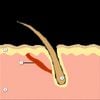community Is this regrowth? Some before & after pictures. Fin (1mg) EOD Reduced scalp pain, You can check my profile for some better pictures, it’s been good or bad, I really don’t know. Let me know about this, Thanks in advance.
A user's progress in hair regrowth after taking finasteride (1mg) every other day, and the replies to the post offering support, advice, and encouragement.
